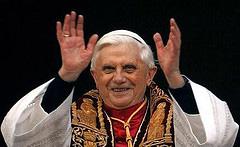This afternoon, WCG announced a video:
Foundations of Worldwide Church of God Theology – 26 minutes – Joseph Tkach, Mike Feazell, Mike Morrison, and Dan Rogers discuss the importance of Trinitarian theology.
However, the true foundation of theology should be the Bible. The truth is that the acceptance of the trinity is based upon the accepting of heretical doctrines that were introduced to professing Christians in the second century by a heretic named Valentinus. It cannot be in any legitimate way considered to be foundational to the true Christian faith.
After allowing him and the heretic Montanus to be affiliated with the Roman Catholic Church for decades, some of their heresies rubbed off on that church and it stopped being binitarian and finally in the third and fourth centuries became clearly trinitarian.
That early Christians did not accept the trinity as modern trinitarians espouse it is admitted by Roman Catholic, Eastern Orthodox, and Protestant scholars.
Roman Catholics also teach that the trinity did not clearly come from the Bible and cannot be fully understood:
In Scripture there is as yet no single term by which the Three Divine Persons are denoted together….The Vatican Council has explained the meaning to be attributed to the term mystery in theology. It lays down that a mystery is a truth which we are not merely incapable of discovering apart from Divine Revelation, but which, even when revealed, remains “hidden by the veil of faith and enveloped, so to speak, by a kind of darkness” (Const., “De fide. cath.”, iv). (Joyce G.H. The Blessed Trinity. The Catholic Encyclopedia, Volume XV Copyright © 1912 by Robert Appleton Company Online Edition Copyright © 2003 by K. Knight).
Thus, the Catholic Church teaches that the trinity is a mystery and not a biblical term, but only a revealed doctrine.
Was the trinity a central doctrine of the New Testament? Here is what one modern historian has written about it:
Like other doctrines that became central to the faith, however, belief in the Trinity was a historical development, not a “given” from the early years of the faith.
A. The basic notion of the Trinity is that there are three persons in the Godhead: Father, Son, and Holy Spirit. These are all equally God and of the same substance, but despite the fact there are three persons, together, they compromise only one God, indivisible in nature.
B. This doctrine does not appear to be a doctrine pronounced by the historical Jesus, Paul, or any other Christian writer during the first hundred years or so of Christianity.
C. It cannot be found explicitly stated in the earliest Christian writings. The only passage of the New Testament that declares the doctrine (1 John 5:7-8) was not originally part of the text but was added by doctrinally astute scribes at a later date (it is not found in any Greek manuscripts until the 11th century) (Ehrman B. From Jesus to Constantine: A History of Early Christianity, Part 2. The Teaching Company, Chantilly (VA), 2004, p. 43).
Notice this contradictory statement from a Protestant theologian:
The doctrine of the Trinity is fundamental for the Christian faith, even though the doctrine was not clearly formulated and generally accepted by an ecumenical council until the fourth century..The Council of Chalcedon, the decisions of which were reaffirmed at the Trullanum of 680-681, gave us the formulation of Christological doctrine we now call orthodox. Why did it take over two centuries for debate to cease on a topic, only to leave us with what was already said in 451?…Is it possible to say that Chalcedon politics created theology? There can be no doubt that political factors played a role, and a very important one…The formula for laying the trinitarian and Christological controversies to rest was spelled out at Chalcedon in 451, although it took more than two centuries to accomplish this goal (Brown HOJ. Heresies: Heresy and Orthodoxy in the History of the Church. Hendrickson Publishers, Peabody (MA), 1988, pp. 127,192-193,194).
Anything that was truly “fundamental for the Christian faith” must have been clear and accepted by the true church from the first century. This fact alone demonstrates the fallacy of the trinity.
A bishop of the Orthodox Church also confirmed the trinity’s late acceptance:
…the councils defined once and for all the Church’s teaching upon the fundamental doctrines of the Christian faith — the Trinity and the Incarnation. All Christians agree in regarding these things as ‘mysteries’ which lie beyond human understanding and language…the first two, held in the fourth century…formulated the doctrine of the Trinity…The work of Nicea was taken up by the second Ecumenical Council, held in Constantinople in 381. This council expanded and adapted the Nicene Creed, developing in particular that teaching upon the Holy Spirit, whom it affirmed to be God even as the Father and the Son are God…It was the supreme achievement of St. Athanasius of Alexandria to draw out the full implications of the key word in the Nicene Cred: homoousios, one in essence or substance, consubstantial. Complementary to his work was that of the three Cappadocian Fathers, Saints…(died 394). While Athanasius emphasized the unity of God — Father and Son are one in essence (ousia) – the Cappadocians stressed God’s threeness: Father, Son, and Holy Spirit are three persons (hypostasis) (Ware T. The Orthodox Church. Penguin Books, London, 1997, pp. 20-23).
If this doctrine were originally part of the true Christian Church, it would seem that this would be a charge laid against true Christians (such as Stephen, Peter, and Paul in the Book of Acts)–but it never was. And of course, as Protestants and even most Roman and Orthodox Catholics admit, the term trinity is not mentioned in the Bible.
Sadly, WCG appears more interested in the traditions of men over the Bible and now seems to think the acceptance of the trinity is foundationally important.
Several articles of related interest may include:
Binitarian View: One God, Two Beings Before the Beginning Is binitarianism the correct position? What about unitarianism or trinitarianism?
Is The Father God? What is the view of the Bible? What was the view of the early church?
Jesus is God, But Was Made Man Was Jesus fully human and fully God or what?
Virgin Birth: Does the Bible Teach It? What does the Bible teach? What is claimed in The Da Vinci Code?
Did Early Christians Think the Holy Spirit Was A Separate Person in a Trinity? Or did they have a different view?
Did the True Church Ever Teach a Trinity? Most act like this is so, but is it?
Was Unitarianism the Teaching of the Bible or Early Church? Many, including Jehovah’s Witnesses, claim it was, but was it?
Binitarianism: One God, Two Beings Before the Beginning This is a shorter article than the Binitarian View article, but has a little more information on binitarianism.



